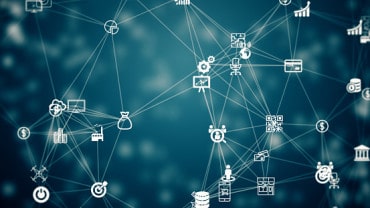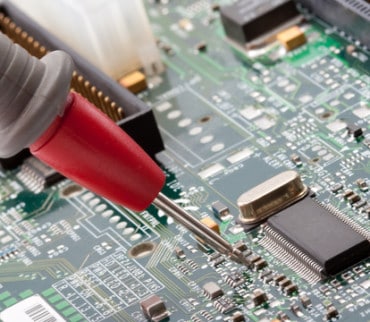
An enterprise-class infrastructure can enhance the effectiveness of digital twin initiatives and enable innovative applications.
Digital twins give manufacturers new ways to design, monitor, and manage products and facilities. While the basic digital twin concept has been around for over a decade, the recent introduction and wide-scale use of connectivity technologies and services such as Edge Compute, the Internet of Things (IoT), and 5G now make digital twins practical for industrial applications.
However, like the use of any new technology in commercial settings, there are challenges to overcome, use cases to define, best practices to learn, and a need to demonstrate the value of digital twin use to the business. To sort through these and other issues, RTInsights sat down with Todd Edmunds, Director Industrial IoT and Edge Strategy at Dell Technologies.
We explored why there is great interest in digital twins for manufacturing, discussed the enabling technologies, the use cases, obstacles, and how to get started using digital twins.
See Also: Center for Edge Computing and 5G
Digital Twins in Manufacturing
RTInsights: What are digital twins, and why the interest in using them in manufacturing?
Edmunds: Digital twins are virtual copies of actual physical objects, systems, or organizations. And when you combine them with real-time data, they can provide valuable insights into the operation of that object, system, or organization. In manufacturing, there can be multiple different types of digital twins, but the industry is still trying to agree on what to call them. Let’s start with operational digital twins. Operational digital twins let you ask and answer the question, what is going on now? For example, what’s happening with the robots in my factory. With this type of digital twin, a manufacturer can also ask the question: What should I be doing in my factory now? Should I be doing predictive maintenance on these robots? How can I use that digital twin to look at longer-term quality metrics related to the products that I’m producing?
Then there is the next generation of digital twin, which is a higher-level simulation twin. It lets you ask and answer the question, what if? What if I increase the speed of my line 25 percent? Will the robots and other assets on that manufacturing line fail prematurely? And if so, would it be worthwhile to do that because I can get more production out of my factory right now, resulting in higher profit margins despite the increased repair costs? These next-generation, comprehensive digital twins have almost limitless possibilities in Industry 4.0, smart manufacturing, and industrial IoT applications.
If you have the right digital twin and the right infrastructure to host that digital twin, almost every single Industry 4.0 use case, all of the efficiencies that you can realize with the latest smart manufacturing initiatives, can be combined into that digital twin implementation. This is where the real value comes in – a single solution that combines predictive maintenance, factory visibility, analytics, and artificial intelligence, and even augmented reality and virtual reality. Imagine a plant manager being able to virtually walk around the manufacturing floor and immediately see what’s going on across the entire plant and even inside every piece of equipment such as robots or machines.
![Featured Resource: Step Inside the Remarkable Factory [Dowload Infographic Now]](https://no-cache.hubspot.com/cta/default/8019034/3238cfdf-9f29-4389-a85c-dcce74d6ebfd.png)
Enabling Technologies
RTInsights: What enabling technologies are needed to make use of digital twins?
Edmunds: Edge computing – bringing compute power closer to where data is being produced and processed – is the current hot topic across the industry right now as organizations look to make faster decisions and reduce their cloud spend. It is also an efficient way of implementing the technologies required for digital twins. Specifically, for manufacturing and industry, there are two types of edge computing that are very helpful for deploying digital twins.
The first is computing at the industrial edge. The industrial edge includes hardened devices that sit on the plant floor and can operate in the extreme temperature, high vibration, ruggedized environments that you find in most manufacturing facilities. Industrial edge compute is used to connect to and pull data out of plant floor devices that don’t share their data very easily. For example, a digital twin of a robot needs a constant flow of real-time status data to maintain its accuracy and operational value. Industrial edge compute devices would be used to ingest and process the relevant control, sensor, and environmental information.
The second type of edge computing that’s critical for this is the enterprise edge. Sometimes referred to as the thick edge, it’s an on-premises, enterprise-grade compute, storage, and networking infrastructure needed to handle the data and workloads that are required for implementing a true digital twin. When you think about the hundreds or thousands of plant floor assets in a large factory, there’s no way that all the data required to implement that many digital twins is going to be stored exclusively in the cloud. Bandwidth requirements, latency limitations, security policies, data volumes, sovereignty issues, and the substantial costs of transferring all that data to and from the cloud will all be too prohibitive.
So, an on-premises, enterprise-grade infrastructure will be essential to handle the data and workloads for the multitudes of digital twins that are going to be in the factory. And when you add in 5G, and upcoming Wi-Fi 6 connectivity, this type of distributed edge compute architecture makes it much easier to tap into and utilize the new streams of information enabled by these novel technologies.
Digital Twin Benefits
RTInsights: How are digital twins being used in manufacturing, and what are their benefits?
Edmunds: There are three broad categories, and I’ll give you a couple of examples at the end. First, digital twins can provide insight into the end-to-end design and engineering of a product. A manufacturer can create a virtual product development environment that keeps all information about the product in one place, which can solve the data silo problems that typically exist in manufacturing organizations.
Another use for a digital twin in manufacturing is to provide insight into the current status and conditions of a high-value production asset. You can use a digital twin to monitor and react to the real-time status and trends of the asset and how it is affecting the overall operation of the factory. By applying analytics and AI, the digital twin can be used to predict when the asset might fail during production and schedule maintenance during normal downtime before it affects throughput metrics.
And then there are the next generation uses, that third category of a digital twin, which gives you insights into future decisions. Such digital twins would apply higher-level AI and analytics to optimize the functionality of your assets. They also would reduce costs, maintenance time, and downtime. For example, McLaren, the famous Formula One (F1) racing team, was able to reduce the time to build their F1 race car from what typically is 42 months to down to 24 months using digital twin capabilities. Applying the same digital twin technologies, they were also able to develop their production P1 hypercar in half the time and at half the cost of the typical industry standard.
Another example is being developed for the U.S. military to use digital twins to build different iterations of military vehicles to optimize and test the survivability of those vehicles. Digital twin technologies allow the simulation of how the vehicles might perform under hundreds or thousands of different attack scenarios and simulate getting hit by different types of ordinance, in multiple locations. Using a digital twin lets them build a much safer, much more survivable vehicle.
Digital Twin Challenges
RTInsights: What are the challenges when deploying and using digital twins?
Edmunds: Digital twins need an enterprise-grade infrastructure to handle the data and workloads. That enterprise infrastructure needs to be designed around security, scalability, and reliability. Once you start seeing the value of the digital twin data, reliability and scalability are going to be key, and that requires an investment in the right infrastructure upfront. That leads to the necessity of identifying the highest value digital twin initiatives and quantify ROI to justify the value of implementing the most efficient architecture. That way, the digital twin can be implemented correctly initially and with the right enterprise-grade infrastructure needed to scale.
Another challenge is that today’s digital twin is in a pretty new phase, a fairly new concept. There have been digital twins around for decades, but they’re not really to the point where we’re looking at this exact replica of an entire system, system of systems, or assets on the plant floor. That’s where the industry’s heading, where some of the top companies are racing to build the software and build the applications that can implement that true digital twin. Nobody’s quite there yet. There are many very good companies out there and very good applications that can handle different parts of this digital twin ecosystem. But there is no end-to-end, single ultimate solution for digital twin yet.
Getting Started with Digital Twins
RTInsights: How do companies get started using digital twins?
You must look at the value, the goal you want to gain from the digital twin, and be ready to invest in the infrastructure. You don’t have to start with a full end-to-end infrastructure to make that happen. However, the infrastructure must be designed to be able to scale broadly and deeply to handle the data and computer workloads necessary to create the digital twin in a way to realize the return on investment.
So, you can start small with an initial digital twin implementation. The right infrastructure will let you add multiple digital twins on top of that and scale to hundreds or even thousands of different digital twins of every conceivable type.
Another way to get started is to get involved in the digital twin ecosystem that is rapidly emerging. One of the best ones is the Digital Twin Consortium. The Digital Twin Consortium is a collaborative organization driving innovation of digital twin technology and was founded by Dell Technologies, Ansys, GE, Microsoft and Lendlease, and includes some of the leading technology players inside and outside the industrial IoT and Industry 4.0 space. The Digital Twin Consortium has a manufacturing workgroup, as well as industry-focused groups for infrastructure and buildings, natural resources, and aerospace and defense. The consortium is open to anybody who wants to join. Joining is a great way to learn about digital twins and what other companies are doing with digital twins and shape the future of the terminology, technology, and taxonomy for digital twins and what they can be.







